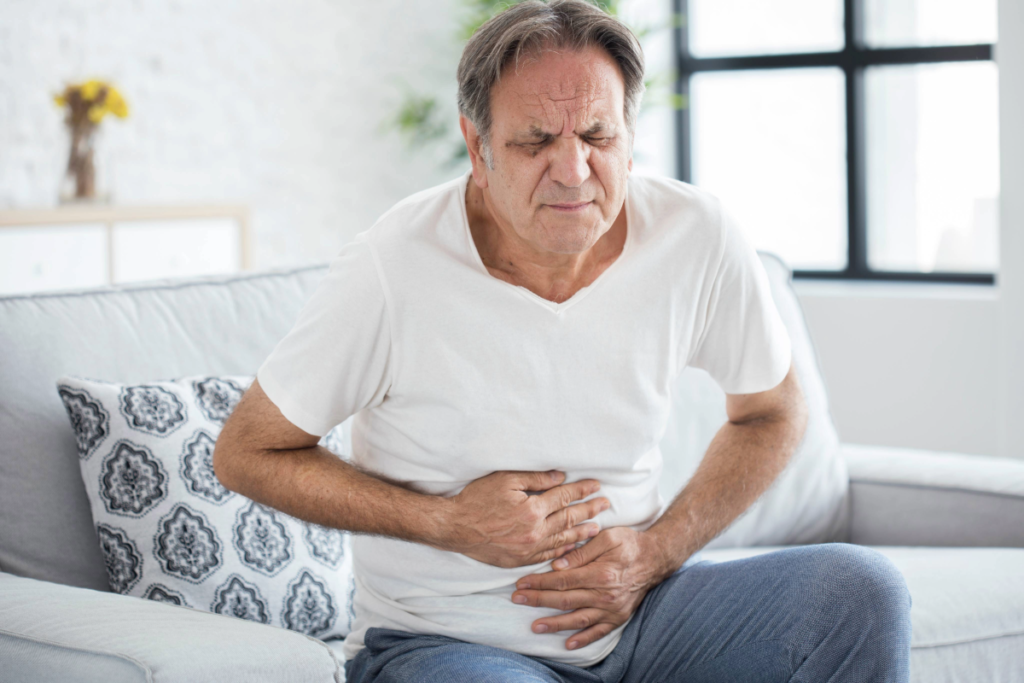Peptic ulcers are sore spots that develop in the lining of the stomach or the upper part of the small intestine (duodenum). While not life-threatening, they can cause significant discomfort and disrupt daily activities. This article explores the causes and symptoms of peptic ulcers, along with available treatment options.
What Causes Peptic Ulcers?
There are two main culprits behind peptic ulcers:
- H. pylori infection: This bacterium can weaken the protective mucus lining of the stomach and duodenum, allowing stomach acid to irritate and damage the underlying tissue.
- Long-term use of nonsteroidal anti-inflammatory drugs (NSAIDs): These medications, such as aspirin, ibuprofen, and naproxen, can irritate the stomach lining and increase the risk of ulcers, especially with high doses or long-term use.
Other factors can also contribute to ulcer development, such as:
- Smoking: Smoking weakens the stomach’s protective lining and increases acid production.
- Excessive alcohol consumption: Alcohol can irritate the stomach lining and increase acid production.
- Stress: While stress doesn’t directly cause ulcers, it can worsen existing ones.
Symptoms of Peptic Ulcers:
The most common symptom of a peptic ulcer is a burning or gnawing pain in the upper abdomen, typically between meals or at night. The pain might improve with eating or taking antacids but return later. Other signs of peptic ulcers can include:
- Bloating
- Indigestion
- Nausea
- Vomiting
- Loss of appetite
- Weight loss (in some cases)
If you experience any of these symptoms persistently, it’s crucial to consult your doctor for proper diagnosis and treatment.
Diagnosing Peptic Ulcers:
Several methods can be used to diagnose peptic ulcers. These might include:
- Upper endoscopy: A thin, flexible tube with a camera is inserted through your mouth to directly visualize the stomach and duodenum for signs of ulcers.
- Upper gastrointestinal (GI) series: X-ray images are taken of the upper digestive tract after you drink a barium solution that coats the lining. Ulcers might appear as breaks in the coating.
- Blood test for H. pylori: This test can detect the presence of H. pylori bacteria in your blood.
- Stool test for H. pylori: This non-invasive test analyzes a stool sample to check for H. pylori infection.
Treating Peptic Ulcers:
The treatment approach for peptic ulcers depends on the underlying cause. Here’s a breakdown of common treatment options:
- Treating H. pylori infection: Antibiotics are typically used in combination to eradicate the bacteria and promote healing.
- Reducing acid production: Medications like proton pump inhibitors (PPIs) help reduce stomach acid production, allowing the ulcer to heal and preventing further irritation.
- Lifestyle modifications: Quitting smoking, limiting alcohol consumption, and managing stress can significantly aid in healing and preventing ulcer recurrence.
- Medications to protect the stomach lining: Certain medications can coat and protect the stomach lining, promoting healing.
Living Ulcer-Free:
With proper diagnosis and treatment, peptic ulcers can heal completely. Here are some tips to prevent recurrence:
- Limit NSAID use: Consult your doctor about alternative pain management options if you require frequent pain relief.
- Practice good eating habits: Eat smaller, more frequent meals and avoid foods that trigger your symptoms.
- Manage stress effectively: Techniques like yoga, meditation, or deep breathing exercises can be helpful.
- Maintain a healthy lifestyle: Quit smoking, limit alcohol intake, and get enough sleep.
By following these strategies, you can significantly reduce your risk of developing peptic ulcers and enjoy a life free from discomfort. Remember, early diagnosis and prompt treatment are key to a successful recovery.



























